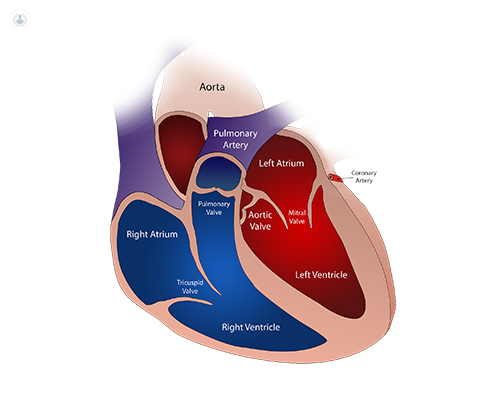mTeer – A new treatment for mitral regurgitation
Autore:Mitral regurgitation is the most common type of heart valve disease, caused by the valve joining the left heart chambers not closing completely. In his latest article, renowned cardiologist Professor Michael Mahmoudi explains this condition in detail, and explains the mTEER treatment method.

What is mitral regurgitation?
The mitral valve is one of the four main valves in the human heart. It allows the flow of blood from the left upper chamber of the heart (left atrium) to the left lower chamber of the heart (left ventricle).

The mitral valve has two major parts called leaflets, and several supporting structures called chordae that allow the valve to be attached to the left ventricle.
Mitral regurgitation refers to the state in which the valve becomes leaky and forces the heart to work less efficiently. This in turn leads to symptoms such as fatigue, breathlessness, and ankle swelling.
Mitral regurgitation can occur when there are abnormalities affecting the leaflets, the chordae, or the left ventricle.
How do you treat mitral regurgitation?
Until recently, the definitive treatment for mitral regurgitation caused by abnormalities in the leaflets or their supporting structure was through open heart surgery.
Repair or replacement of the mitral valve remains the gold-standard treatment for such abnormalities. This is a major operation, and unfortunately, a significant number of patients are not fit enough to go through surgery.
Over the past 12 years, a new technique has been developed called mitral transcatheter edge-to-edge repair (mTEER), whereby a special clip is placed between the two leaflets of the mitral valve to reduce the degree of regurgitation.
This technique has been shown to be safe and effective in reducing breathlessness, fatigue, improving patients’ quality of life and perhaps improving their longevity.
What are the risks of mTEER?
mTEER typically takes between 1.5 to 3 hours. It is done with the patient under general anaesthesia. The heart is accessed using designated equipment through a large vein called the femoral vein, which is located at the top of the groin.

The risks of mTEER can be broadly divided into two categories:
Risks related to the deployment of the clip:
- Clip detachment: 0.7%
- Clip embolization: 0.3%
- Abnormalities of the heart rhythm requiring drugs or an electric shock treatment: 5%
Risks related to accessing the mitral valve:
- Bleeding: 3.5%
- Stroke: 4.6%
- Collection of blood around the heart requiring emergency drainage: 1.4%
- Death: 1%
- Damage to the oesophagus as a result of ultrasound examination of the heart during the procedure: 0.08%
Can mTEER be used for mitral regurgitation caused by abnormalities of the left ventricle?
The cornerstone of treatment for mitral regurgitation caused by abnormalities of the left ventricle is the use of drugs that have been shown to be extremely effective, not only in improving the function of the left ventricle, but also reducing the degree of mitral regurgitation.
In some patients however mitral regurgitation remains a significant problem despite the use of all the appropriate medications. In such patients, mTEER has been shown to be a very effective additional treatment.
Professor Michael Mahmoudi is a leading consultant cardiologist based in Southampton, Woking & London. If you would like to book a consultation with Professor Mahmoudi you can do so today via his TopDoctors profile.


